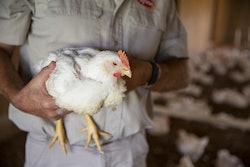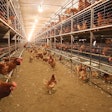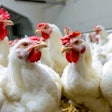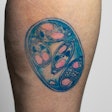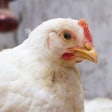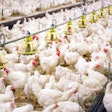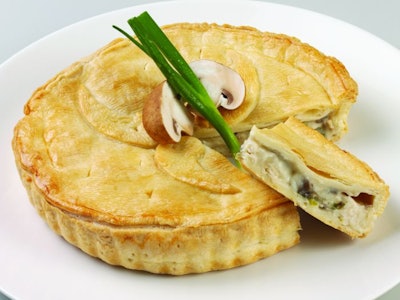
A fragment of metal or glass or any other foreign object is the last thing anyone wants to find in their box of chicken nuggets. That's why X-ray inspection technology has been a familiar feature on factory production lines for more than 35 years.
What's not so well known is how many other things the latest generation of X-ray inspection technology can detect when it comes to poultry processing.
Advanced linear array technology is being combined with hundreds of sophisticated inspection algorithms and cutting-edge machine learning techniques to take production line inspection to a whole new level.
Numbers and volumes
The technology can be used to check the weight of a product, for example, and also the individual weights of a series of items within a pack. It can check that a box of chicken nuggets contains the correct number of nuggets – or that each stuffed chicken breast in a pack has the right amount of filling. It can also detect and reject a chicken pie with less filling than the others in a multipack, even if some of the others have slightly too much filling.
X-ray inspection technology can even check that chicken nuggets are the correct shape – something that is best done at the forming machine, where the items are unbreaded and all the same thickness.
This uniformity allows for greater sensitivity and means only faulty products are ejected. After breading, clumps of the spicy coating can appear as dense defects to the inspection machine.
Fragile items damaged during production can also be identified by X-ray inspection. Products such as chicken pasties and pies are quite fragile when baked and chunks of pastry can easily be knocked off on the production line.
Not surprisingly, consumers are reluctant to buy such damaged products, so they tend to get left on the supermarket shelf – leading to food waste and, ultimately, higher prices. X-ray technology can monitor the overall shape of each part of the pies and reject those with bits missing – even after they are packaged and hidden from view.
Seal inspection
Seal inspection is another aspect of food processing benefiting from the latest X-ray inspection technology.
Once the protective gas mix has reduced the amount of oxygen inside a tray of chicken fillets, for example, or a chicken ready meal, a good seal is crucial to help the contents stay fresh for as long as possible.
If even a tiny piece of meat or a small drop of sauce gets deposited on the seal of the packaging, however, it will create a non-sterile "channel," breaking the airtight seal and allowing in oxygen – which will make the product spoil faster and lead to wastage and customer complaints.
With the latest X-ray technology, two images are generated from a single detector – one optimized for the product and one for the seal area. It means even the tiniest breach of the seal can be detected.

Seeing what you want
For fresh products packaged with a deoxidizer or oxygen scavenger – typically a small pouch or sachet of ferrous oxide to remove any last traces of oxygen from inside the packaging – X-ray inspection technology can confirm the presence of a single deoxidizer in each pack. The latest developments in image processing software now enable the pouch or sachet to be masked out from the inspection of the rest of the product, so that any foreign bodies can still be detected within the pack.
Many other features that would otherwise be seen as contaminants can also now be routinely masked out. The pull tab of a metal can containing chunks of chicken breast, for example, could cause a false reject as it deviates from the uniform thickness of the main body of the can. But detailed information about the geometry of the can means the pull tab can be automatically located and defined as an area of lower sensitivity – giving a reliable means of inspection.
Image processing software now also provides the tolerance levels required to deal with the variable shape and thickness of glass containers. The technology can cope with the thick glass often found at the base of glass jars used for items such as chicken broth, along with tapered shapes, ridges and bulges. The presence of bubbles in a fluid within a container can also be detected. The bubbles might be unwanted – if they affect the quality of the product. Or the bubbles might be required – in aerated chicken mousse, for example. In each case, product quality can be confirmed.

Pilgrim’s Pride recalls chicken breast nugget products
www.WATTAgNet.com/articles/40636


